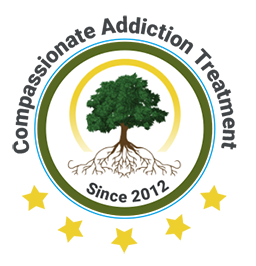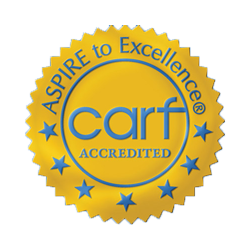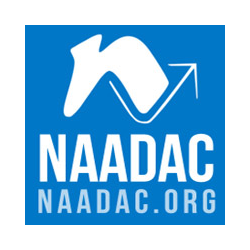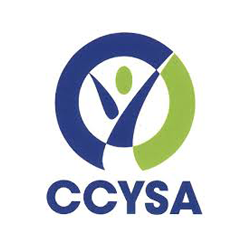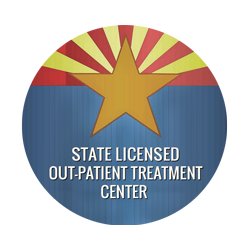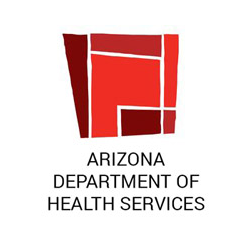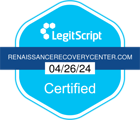As we welcome the beautiful month of May, it's the perfect time for a fresh start. If you or a loved one is struggling with addiction, seeking help from an Arizona drug rehab center can be the life-changing decision you need. In this guide, we'll explore various rehabilitation options in Arizona to help you make an informed choice and begin your journey towards recovery.

As the flowers bloom and the days grow longer, spring is a time of renewal and growth. For those struggling with addiction, it can be a season of reflection and hope. If you or someone you love is seeking help for substance abuse issues, faith-based drug rehabs can provide a unique approach to healing. In this blog post, we'll explore the power of faith-based drug rehabs in Gilbert, Arizona, and how they can help you embrace recovery this spring.

In the 2021 NSDUH survey, 49.3% of full-time college students from ages 18 to 22 reported drinking alcohol in the previous month. Around 27.4% reported binge drinking within the past month. College drinking is considered by many students as a rite of passage. Many others see it as just a typical feature of social life for young people more generally. Of course, there is a darker side to binge drinking by students. The hazards of habitual binge drinking often lead to severe lifelong consequences. When such a situation develops for a young person, alcohol addiction treatment may be needed.
Contact Renaissance Recovery Center for information about overcoming alcohol addiction for young adults.
U.S. College Drinking Statistics
Many students may not make the connection between alcohol abuse and binge drinking. The latter may seem like a normal and harmless part of the college experience. But, here are some eye-opening statistics reportedly associated with college drinking in the United States:
- In 2019, nearly 1 in 10 full-time college students had alcohol use disorder (AUD).
- Nearly 700,000 students from ages 18 to 24 are assaulted each year by other students who have been drinking.
- About 1 in 5 female students are sexually assaulted during their college years and most of the attacks involve alcohol or a drug.
Why Do College Students Binge Drink?
The majority of college drinking is social and is considered, overall, to be just a part of college culture. But, more concerning habits of binge drinking involve a desire for some form of mental or emotional relief, such as to curb anxiety. In those cases, binge drinking is more likely to lead to more serious and lasting consequences. Those can include the development of alcohol addiction requiring AUD rehab treatment.
Among the most common reasons college students drink are:
- Coping mechanism
- Mood enhancement
- Anxiety relief
- Tension relief
- Relieve academic pressures
- Relieve the pressures of daily living
- Reduce stress
- Relieve inhibitions
- Feel more comfortable in social settings
- Experiencing pushing boundaries
- To fit in with peers
- Changeup their current routine
- Social camaraderie
What is Considered Binge Drinking, and What is AUD?
These definitions clarify the difference between binge drinking and alcohol use disorder:
Binge drinking: This is a drinking pattern in which a person continues drinking and his or her blood alcohol concentration (BAC) is 0.08%. That usually takes about 5 drinks within two hours for men and about 4 drinks in that timeframe for women.
Problem drinking: Binge drinking or other habitual drinking becomes problematic if it is negatively impacting the individual at work, home, socially, emotionally, or physically. AUD is understood as a brain disease that can range from moderate to very serious, even fatal. If the habit has advanced from casual drinking to an inability to control or stop drinking, the person has developed AUD.
Frequently Asked Questions About Binge Drinking and AUD
How much alcohol is binge drinking?
Binge drinking is defined by a pattern of activity more than by the amount of alcohol a person drinks at a given time. It’s a pattern of continuing to drink while the BAC is 0.08%.
Is binge drinking alcohol abuse?
Yes, drinking excessively is abusing alcohol.
Does binge drinking make you an alcoholic?
No. Binge drinking is narrowly defined as a pattern of continuing to drink, while the BAC is 0.08%. But, binge drinking can lead to alcoholism.
Taking Back Your Life – Renaissance Recovery Center
You do not have to try to overcome AUD alone or feel helpless in your struggle to regain control of your life. Our experienced team of alcohol addiction treatment specialists knows how to help you through the process of recovery from AUD. Keep in mind — we're here for you 24/7.
Call Renaissance Recovery Center at (480) 526-7738, or reach us here online for help with a rehab program combining therapeutic medication and talk therapy.

What happens when you mix drugs and alcohol?
Alcohol and drugs used together often lead to the need for emergency medical treatment. Both illicit street drugs and prescription drugs, especially pain medications and stimulants, are widely used with alcohol in the United States. There are health and safety risks in abusing just alcohol or a strong drug without mixing the two. But combining alcohol and drug use can be dangerous. Even some drugs that may seem harmless when taken with alcohol can lead to serious health consequences, even death.

If someone close to you is struggling with alcohol addiction, you may be worried about how to talk to him or her or you may feel like there’s nothing you can do. But, there are ways to be effective helping an alcoholic. Here is some guidance on how to help an alcoholic stop drinking, with emphasis on ways to talk to someone with an alcohol-use disorder (AUD) about getting professional treatment for the addiction.

The effects of drug abuse on the life of the user can be devastating. If you are worried about a peer or family member declining due to substance abuse, it can help to know the signs of drug use. Recognizing a likely case of drug abuse may help someone who is heading toward addiction. When the physical and behavioral signs of drug use are overlooked, drug abusers can end up in very serious situations. Those can include financial ruin, illegal activities, legal problems, driving while under the influence, job loss, failing in school, and other bad outcomes.
How to Recognize Warning Signs of Drug Use
General signs of drug abuse are common across most forms of drug abuse. People who are exhibiting one or more signs in one or more of these observable areas of their persona may be abusing drugs. Signs that drug users tend to have in common include:
- Behavioral changes
- Physical changes
- Cognitive changes
- Psychosocial changes
Depressants
Depressants, including prescription drugs, are often misused by people to self-medicate in attempts to control depression, grief, feelings of guilt, or cope with external circumstances. Examples of frequently abused stimulant drugs include Vicodin, GBH, Xanax, Valium, and many others. Signs of using drugs, including depressant drugs, may include:
- Poor concentration
- Pupils contracted
- Seeming intoxicated
- Poor balance
- Poor judgment
- Speech slurred
- Excessive sleep
Stimulants
Stimulant drugs are commonly used to produce an exaggerated sense of happiness and excitement. Examples of frequently abused stimulant drugs include cocaine, amphetamines, and others. Key signs that can help you recognize signs of stimulant drug use may include:
- Hyperactive
- Euphoric
- Pupils dilated
- Irritable
- Trouble sleeping
- Lack of appetite
- Excessive weight loss
- Dry mouth and nose
- Anxiety
Hallucinogens
Examples of popular hallucinogenic drugs include LSD, PCP, THC, and others. Key signs that can help you recognize abuse of stimulant drugs may include:
- Confusion
- Aggression
- Dilated pupils
- Hallucinations
- Slurred speech
- Paranoia
- Mood swings
Marijuana
Marijuana stays in the body for a relatively long time. Recognizing these signs of marijuana abuse can help you be aware of times when someone at work, school, or home may be under the influence:
- Lethargy
- Lack of coordination
- Memory impairment
- Inability to focus
- Weakened sensory perceptions
- Slowed reaction time
- Poor decision-making
- Loss of interest in activities
- Withdrawal and self-isolation
Cocaine
The majority of emergency room visits involving illicit drug misuse are due to cocaine use (reportedly about 40%), Key signs that can help you recognize cocaine abuse may include:
- Hyperactive
- Pupils dilated
- Mood swings
- Social self-isolation
- Reckless behaviors
- Nose running
- Nosebleeds
- Talkativeness
- Sleep changes
- Loss of appetite
Heroin
Heroin and other opioid drugs are very popular street drugs for recreational use. Key signs that can help you recognize heroin abuse may include:
- Pupils contracted
- Pupils nonresponsive to light
- Coughing and/or sinus problem
- Needle marks on the body
- Sweating
- Sleeping at odd times
- Vomiting
- Twitching
- Loss of appetite
Common Signs of Most Types of Illicit Drug Abuse
You may have noticed that some or all of the drug classes and individual drugs listed above share some behavioral and physical signs of drug use in common. These are some of the most common signs of substance abuse that are common to misuse of drugs across various drug types:
- Declining personal hygiene
- Risky or reckless behavior
- Poor performance at school or work
- Glassy or bloodshot eyes
- Poor physical coordination
- Poor concentration
- Delayed reactions
- Making poor decisions
- Lying or hiding personal information
- Excessive unexplained absences
Drug Addiction Treatment – Renaissance Recovery Center
Renaissance provides state-of-the-art personalized outpatient treatment for substance use disorder (SUD). We offer rehab programs for adults who are struggling SUD and those with the co-occurring disorders of drug addiction and mental illness. Our therapeutic strategies help our clients overcome self-defeating habits in thinking and behaviors. We help people improve their physical and mental health and strengthen the particular skills and abilities needed to live free from drug dependency.
For more information on the signs and symptoms of drug use and treatment for SUD, call Renaissance Recovery Center at (480) 526-7738, or contact us here online!

Growing up with an alcoholic father can be a very confusing, frightening, and sorrowful experience for children. There are many potential negative effects on children’s mental, emotional, and physical health from living with an alcoholic parent. Here is some essential information about the shocking impacts on children from living with an alcoholic father.
Effects of an Alcoholic Father On a Child
Being raised in a home with an alcoholic father can adversely impact children in many ways. (The effects of alcohol on children in cases of alcoholic mothers can be even more profound.) For example, children of alcoholic parents can experience:
- Increasing and continuing emotional difficulties
- Problems coping, for example:
- Depression
- Anxiety
- Difficulty connecting with people
- Confusion
- Embarrassment
- Anger
- Behavioral issues, for example:
- Social withdrawal
- Truancy
- Substance abuse
- Stealing
- Violent behavior
- Suicidal behavior
- Frequent physical symptoms, such as:
- Headaches
- Stomach aches
- Increased premature mortality:
- Suicide
- Violent death
Are Alcohol Abusers Likely to Abandon or Abuse Children?
Data indicates that alcohol abuse can damage a person’s brain, behavior, and relationships. There may be a higher probability of physical abuse or neglect, or sexual abuse. Alcoholics may repeatedly abandon their families, causing children repeated suffering throughout their formative years. For kids with alcoholic parents, the home may be disorganized or chaotic, creating an environment of instability, insecurity, neglect, violence, physical abuse, and exposure to incidents of abuse or violence inflicted on other family members.
Lasting Effects on Adult Children of Alcoholic Fathers
If you have looked back on growing up as a child with an alcoholic father, you may still suffer the serious impacts of that experience. You may recognize the effects that those early years have had on your life. Perhaps you have continuing psychological or emotional problems that are linked to your childhood circumstances. A first step to healing is to recognize that some effects that an alcoholic father can have on your life do not necessarily stop after childhood.
Adult children of alcoholic fathers can struggle with ongoing social and emotional problems. For example, anxiety, low self-esteem, resentment, communication difficulties, relationship problems, anger, and others. Alcoholism in a parent may account for a genetic component that amounts to about half of a person’s risk for alcohol addiction.
Getting Help Healing from the Effects of an Alcoholic Parent
If you think you may be experiencing symptoms of mental or emotional effects from your childhood with an alcoholic parent, discuss your concerns with a professional. You and your loved ones may benefit significantly from your choice to get the right kind of help to overcome the often lasting severe effects on children in that situation.
Resources for Children of Alcoholic Parent
There are nationwide resources for children of alcoholic parents, including these, among numerous others:
- National Association for Children of Addiction
- Adult Children of Alcoholics (ACA)/Dysfunctional Families
- The National Institute on Alcohol Abuse and Alcoholism
- Childhelp National Child Abuse Hotline 1-800-4-A-CHILD (1-800-422-4453)
Best Alcohol Treatment – Renaissance Recovery Center, Gilbert AZ
Renaissance Recovery Center provides a free assessment for adult children of alcoholic parents who may be suffering from mental health effects from that early experience. Or, if you believe that you have developed an alcohol addiction, don’t wait. Call us for help today. Our team of professionals works with adults affected by childhood with an alcoholic parent to identify and overcome the often life-long impact of living in extreme conditions through their formative years.
For information on treatment for anxiety, depression, and other conditions, Renaissance Recovery Center at (480) 526-7738, or contact us here online today!

Detox from an addictive substance usually involves a brief period of physical difficulty called acute withdrawal. This process can cause severe, even potentially fatal consequences to a person if withdrawal is not managed by experienced detox professionals. After going through the acute withdrawal phase, an additional period of persisting withdrawal symptoms occurs. This second phase of healing is called post-acute withdrawal syndrome (PAWS).
What is Post Acute Withdrawal Syndrome?
Post-acute withdrawal syndrome can set in after acute withdrawal. It may persist from a few months to as long as two years. The syndrome is outwardly characterized by difficult psychological and physical symptoms. Typically, those effects require support from substance addiction treatment professionals. For the highest likelihood of lasting success, people planning to enter detox and rehab should be prepared in advance to work through the PAWS phase of drug withdrawal.
Post Acute Withdrawal Syndrome Symptoms
Some of the most common symptoms of post acute withdrawal syndrome after detox include:
- Acute stress sensitivity
- Extreme mood swings
- Poor physical coordination
- Fluctuating energy levels
- Anxiety
- Inability to focus
- Obsessive thinking
- Depression
- Sleep difficulties
- Lack of ability to feel pleasure
What Causes PAWS?
Post-Acute Withdrawal Syndrome (PAWS) is due to changes in neurotransmitters brought on by the brain’s response to substance addiction, in which it attempts to adapt itself to the changes.
- When a person stops using an addictive drug, the neurotransmitters undergo changes again, which may overstimulate or agitate the individual mentally and emotionally.
- Habitual substance use over time can cause the brain to lose some of its capacity for managing stress.
- The withdrawal experience can impact the stress-coping capacity of the brain.
The persistent symptoms of PAWS appear to be due to these changes in the brain. Medical science researchers have suggested that these are the same changes that cause increased levels of tolerance during the user’s period of habitual substance abuse.
How Long Does PAWS Last?
Post acute withdrawal symptoms may persist up to as long as two years. The length of the PAWS phase of substance withdrawal varies based on the person’s health, the type of drug used, how long it was used, and the way it was consumed. PAWS symptoms sometimes reach their point of greatest intensity at around the six-month point and can even threaten efforts to avoid relapse. Typically, PAWS is likely to persist longer in a person who:
- Used the substance habitually over a long period.
- Consistently used large amounts or frequent doses of the drug.
- Consumed drugs by injecting or snorting.
- Has liver or kidney issues.
- Is older and has more limited physical resilience.
How to Treat and Manage PAWS
The rough symptoms of post acute withdrawal syndrome can cause a sense of despair in people struggling to avoid resorting to relapse for relief. It’s critical to understand that the PAWS symptoms will stop eventually. These are the steps to coping with and overcoming PAWS that people in substance addiction recovery need to adopt in order to best avoid relapse:
- Build strong coping skills in rehab.
- Continue in treatment longer.
- Build a strong support system while in rehab.
- Avoid situations that present a high risk of relapse.
Why Choose Renaissance Recovery Center?
If you or someone you love needs alcohol support or is suffering from post acute withdrawal syndrome, Renaissance Recovery Center in Gilbert, Arizona, can be of great help. Our relapse prevention systems have made Renaissance one of the region’s most effective substance addiction treatment programs. We accept most health insurance.
If you need PAWS to support, don’t just try to endure on your own.
Get the best help available to you!
Call Renaissance Recovery Center at (480) 526-7738, or contact us here online to schedule a free assessment today and find out how we can help you!

The holidays can offer wonderful opportunities during drug or alcohol addiction recovery to relax and enjoy being with loved ones, sharing great food, and making special memories. With all the festivities, it can be easy to get off track with the rehab program. People who have not yet developed fully effective tools for relapse prevention can find themselves at risk. So, if you or someone close to you is in treatment, here are some tips to help you stay fully committed to your sobriety during the holidays.

Habitual use of drugs or alcohol can alter the chemical composition of the brain and cause dependence to develop. During withdrawal from an addictive substance, the brain’s chemical functions and circuits react by trying to regulate themselves as the blood concentration of the addictive substance is reduced. That change triggers withdrawal symptoms. Completing detox leads to a full recovery from addiction in drug rehab. Let’s look at the fundamentals of how to overcome withdrawal symptoms.

